US Slams Rocket Attack On Its Base In Northeastern Syria
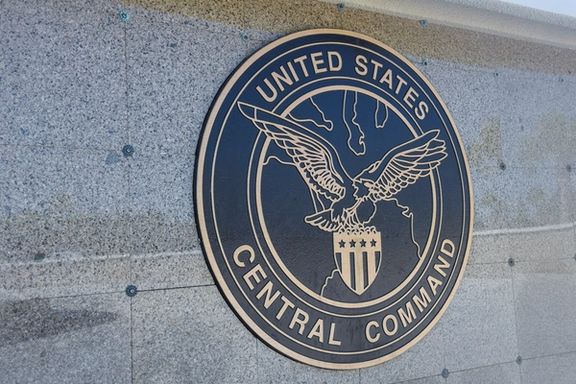
The Pentagon late Friday denounced a rocket attack on a US base in northeastern Syria which had no casualties or damage to the base.

The Pentagon late Friday denounced a rocket attack on a US base in northeastern Syria which had no casualties or damage to the base.
US Central Command, CENTCOM, said in a press release that two rockets were fired at the base in al-Shaddadi, Syria, while a third unfired rocket was found at the rockets’ origin site.
“Attacks of this kind place coalition forces and the civilian populace at risk and undermine the hard-earned stability and security of Syria and the region,” spokesman Col. Joe Buccino said in a statement.
The attacks come as the Turkish military has launched a wave of air raids on Kurdish forces in both Syria and Iraq in retaliation for a bombing in Istanbul on November 13 which left six people killed and 80 injured.
Turkey blames the banned Kurdistan Workers Party (PKK) and the YPG Kurdish forces for the attack, but they deny any involvement.
However, there is a suspicion the rockets were launched by Iranian-backed Shia militias who had previously hit the same area east of the Euphrates River.
Earlier, the US Department of Defense expressed concern about attacks in northern Syria, Iraq and Turkey, saying that it could threaten progress made to defeat the ISIS.
“The recent air strikes in Syria have directly threatened the safety of US personnel who are working in Syria with local partners to defeat the Islamic State,” stressed Pentagon spokesman General Patrick Ryder.
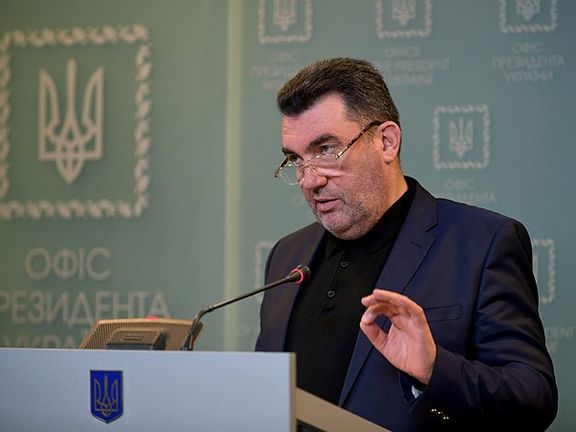
Ukraine’s top security official has confirmed that several Iranian military advisers have been killed during a Ukrainian military strike in Crimea last month, warning that his country will target more.
During an interview with The Guardian from Kyiv published on Thursday, the secretary of Ukraine’s national security and defense council, Oleksiy Danilov, said that the military personnel who were killed were in Crimea to help Russia pilot the Shahed-136 kamikaze drones supplied by the Islamic Republic.
He did not disclose the exact number of casualties but added that any other Iranians on occupied Ukrainian territory supporting the Russian invasion would also be targeted. In October, Israeli media said that 10 were killed in Ukrainian strikes in occupied Crimea.
“You shouldn’t be where you shouldn’t be. They were on our territory. We didn’t invite them here, and if they collaborate with terrorists and participate in the destruction of our nation, we must kill them,” Danilov said.

Russia has been using Iranian drones and missiles in its air attacks against the Ukrainians. In October, it targeted Ukraine’s civilian energy infrastructure, plunging it into blackouts as the winter cold has begun to fall across the country. Amid international outcry over the Islamic Republic’s supply of drones and ballistic missiles for the Russian invasion, Ukrainian President Volodymyr Zelenskiy told a meeting of UN security council late November 23, that the attacks are “an obvious crime against humanity” adding that Kyiv would put forward a resolution condemning “any forms of energy terror”.
On the same day, Ukranian intelligence agencies reported that the Islamic Republic is set to deliver more than 200 Shahed-136 and Arash-2 kamikaze drones, and Mohajer-6 reconnaissance and combat UAVs later in November.
The United States and its European allies have strongly objected to the Iranian move, which is one of the factors in keeping nuclear talks with Tehran dormant.
The United Kingdom defense ministry also said Wednesday that Russia had used hundreds of Iranian-made drones in Ukraine but none since around November 17, suggesting that supplies have run out and Moscow is looking for more Iranian drones. Although the use of Iranian-made drones had met with “limited success”, with most of those launched neutralized, the British ministry said Moscow would “probably seek resupply” as “Russia can probably procure UAVs from overseas more rapidly than it can manufacture new cruise missiles domestically.”
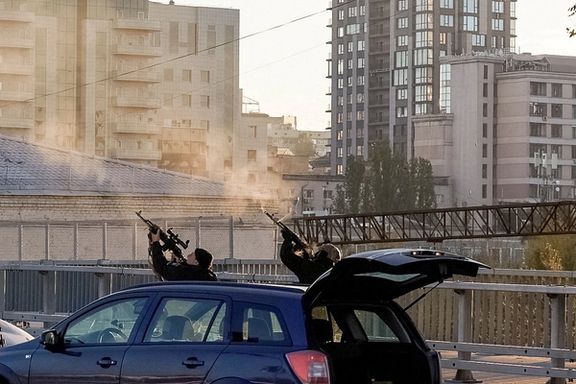
“It is known that the supply of these UAVs will be carried out over the Caspian Sea to the port of Astrakhan,” the Ukrainian intelligence agency said, adding that “The drones will arrive disassembled. Later, on the territory of Russia, they will be assembled, repainted and applied with Russian markings,” the report says. Russia applies its own markings to the Shahed-131 and the Shahed-136, dubbing them the Geran-1 and Geran-2 respectively – apparently to obscure their Iranian origins.
According to a report by CNN, Tehran is preparing to send approximately 1,000 additional weapons, including surface-to-surface short range ballistic missiles and more attack drones to Russia to use in its war against Ukraine.
Iranian foreign minister Hossein Amir-Abdollahian said earlier in the week that Tehran had “sold very few Iranian drones in the framework of defense cooperation with Russia 11 months before the start of the Ukraine war.” Amir-Abdollahian said Iran and Ukrainian military officials had met in a third country to discuss the issue, and that “we are continuing our investigations.”
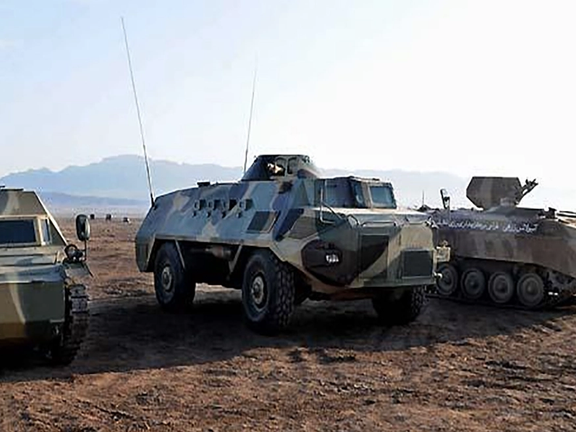
Iran is reinforcing its military on the border with Iraq adjacent to the Kurdistan autonomous region with armored unites, the commander of IRGC ground forces announced Friday.
Mohammad Pakpour emphasized that reinforcing border troops is meant to prevent “infiltration by teams of Kurdish parties based in Iraqi Kurdistan.”
Iran has deployed military firepower against Iranian Kurdish civilian protesters in western Iran, killing at least 12 people since November 16. It has also repeatedly shelled bases of Iranian Kurdishinsurgent groups in Iraq, portraying the popular protests as a separatist movement.
Iran International reported earlier that Iran was sending troops to its Kurdish-majority regions. It is not clear if these reinforcements will be used against civilian protesters or are solely meant to intimidate Kurdish groups in Iraq, that have so far stayed out of the popular protests in Iran and there have been no signs of separatist agitation.
The Iraqi government that has protested Iranian missile attacks on its soil, decided Thursday to work on a plan to boost its own border troops. A member of the Iraqi parliament, who preferred to remain anonymous, told Iran International that Kurdish lawmakers have been putting pressure on the central government to act.
Pakpour said that armor and “special units of ground forces” is being dispatched to the Iraqi border.
Mohammad Esmail Kowsari, a former IRGC commander and currently a member of the Islamic Republic parliament, also confirmed that military units were being dispatched to deal with Kurdish insurgents in Iraq.
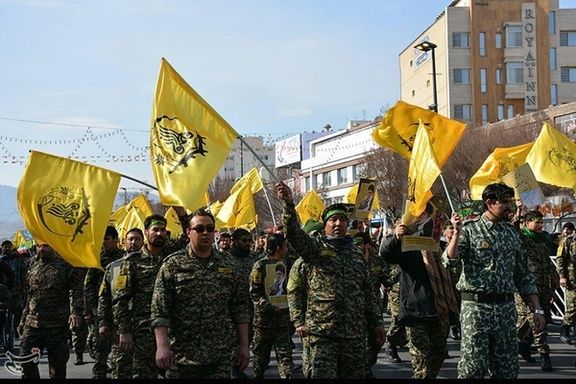
A UK-based organization monitoring Syria says regime forces of Bashar Al-Assad along with Iranian militias have conducted joint exercises near the border with Iraq.
The Syrian Observatory for Human Rights (SOHR) announced Wednesday the joint night maneuvers were staged at the outskirts of Homs Governorate where Al-Tanf base is located.
Al-Tanf is a US military base within territory controlled by the Syrian opposition. It is located 24 km west of the al-Tanf border crossing along the Iraq and Jordan-Syria border.
The Syrian Observatory says heavy weapons were used to raise the fighting readiness of their forces, coinciding with explosions heard in Al-Omar oil field, which is the largest “International Coalition” base in Syria.
Earlier this month, SOHR said it was informed that “Russian officers, Iran’s Revolutionary Guard officers as well as Afghan Fatemiyoun militia are present east of Palmyra in eastern Homs countryside near Al-Tanf base.
Fatemiyoun Brigade is an Afghan Shia militia formed and supported by Iran since 2014 to fight in Syria on the side of the Bashar al Assad’s forces.
“These drills were designed to train Iranian-backed militiamen on the use of short and medium-range Iranian-made missiles on inanimate targets in the Syrian desert and Palmyra military airbase,” added SOHR.
The region has been the scene of clashes between Iranian-backed forces and US troops.
Iran has long backed the Syrian president, Bashar al-Assad’s, government in Syria’s grinding civil war. Iran says it has no troops in Syria but the IRGC military “advisers”.
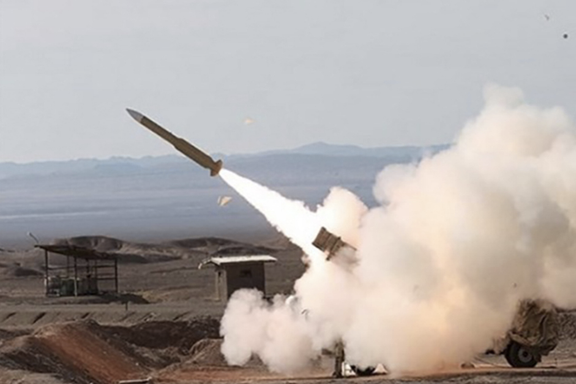
The Islamic Republic of Iran has called on the UN Security Council to try to close the headquarters of the Iraqi-based Kurdish groups and disarm them.
The Islamic Republic’s mission to the UN in letters to members of the Security Council claimed that its attacks on Kurdish groups in Iraq’s semi-autonomous Kurdistan region “aim to defend the country’s national security.”
The clerical regime has renewed its attacks on Kurdish targets in the Iraqi Kurdistan region since protests in Iran broke out in September, launching sustained missile and drone attacks in the past five days, on the pretext that separatist Kurdish groups are fanning the flames of conflict in Iranian Kurdish cities by supporting the protesters.
In its letters to UNSC member, Tehran alleged it “has recently launched necessary and proportionate military operations against terrorist groups’ bases in the Iraqi Kurdistan region, which was meticulously planned and precisely targeted on terrorist locations.”
It also noted that the Islamic Republic has shared “irrefutable evidence and credible information” with the central government in Iraq about the use of their territory by “terrorist and separatist groups to plan, support, organize and carry out terrorist and subversive acts” against Iran.
This letter was sent in a situation when the United Nations Human Rights Council is scheduled to hold an emergency meeting about the ongoing protests in Iran on Thursday.
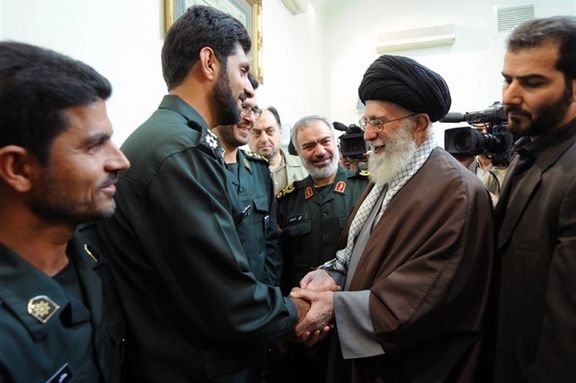
The chief commander of Iran’s Revolutionary Guard has threatened to take revenge for the death of one of its senior officers who was killed in Syria Monday.
Hossein Salami said both the enemies and the Iranian nation must know that no killing will go unanswered.
However, he added that “the resistance front, which is a united front, takes revenge of the martyrs from the Zionists on a daily basis.”
The ‘resistance front’ is a term coined by the Islamic Republic to refer to its proxies and allies in the region.
“Of course, every martyr has a separate revenge, and these revenges will be taken at the right time and place. The levels of these measures will be different, but they will be done in time,” threatened Salami.
Government media in Iran carried a statement by the Revolutionary Guard November 22 saying that one of its senior officers has been killed in Syria.
The IRGC statement said Colonel Davoud Jafari, a senior aerospace commander lost his life in a roadside bomb blast on the outskirts of the Syrian capital, Damascus.
The IRGC said the incident took place on Monday, accusing Israel of executing the attack and pledging to respond to it. But it is not clear if Jafari died in a road side bomb or in one of frequent Israeli air strikes.
Iran has been deeply involved in the Syrian civil war for more than a decade, deploying tens of thousands of its own forces as well as hired Afghan, Iraqi and Pakistani Shiite fighters, who helped save Bashar al-Assad’s regime, with help from Russia.